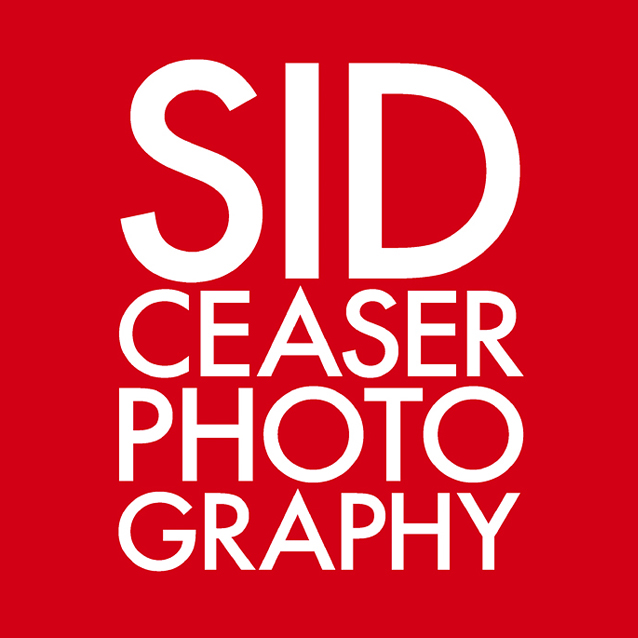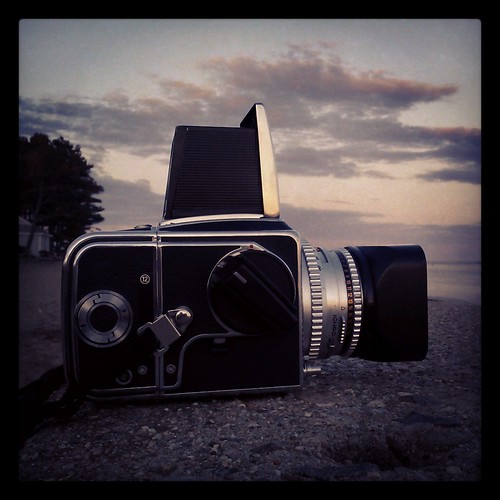
The Hasselblad 500C/M camera made by Hasselblad is, hands down, my favorite camera ever made. It is a true meld of art and utility; a beautifully created, completely modular, silver and black work of art. It's like a great piece of clockwork - everything moves and works in sync and can be adaptable in hundreds of ways. From the square 6x6 images it captures, right down to the unique auditory "KER-SLAP!" the camera makes, every piece of it is a labor of love and the top of it's craft.
I've blogged in the past about how I finally obtained my 500C/M; a unique memory and a flash of luck that got me one of the last used camera bodies refurbished by one of the last true US Hasselblad technicians.
That is why I became heartbroken and enraged when Hasselblad recently announced the end of the "V" line and series of Hasselblad film cameras. . . .
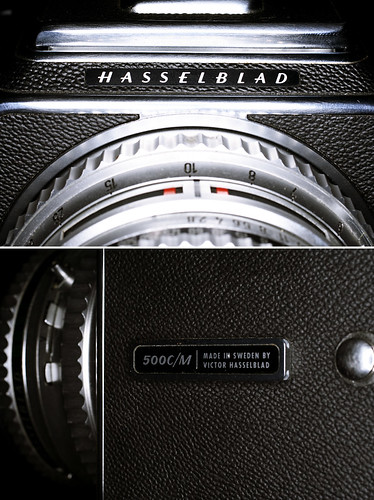
I can understand that it's difficult to market two different brands; the current "H" series of Hasselblad cameras and the classic "V" series (The "V" designation, named from Hasselblad creator Victor Hasselblad, came about around the time the "H" series debuted - to separate the brands) and since most film-related things have been in a sharp decline of late, it makes sense to cease production of film-based image capture cameras, but, still, it kinda seems like a punch in the gut to think about.
The 500 and 503 series Hasselblad cameras are the Rolls Royce of cameras, especially when compared to the "H" series that currently exists.
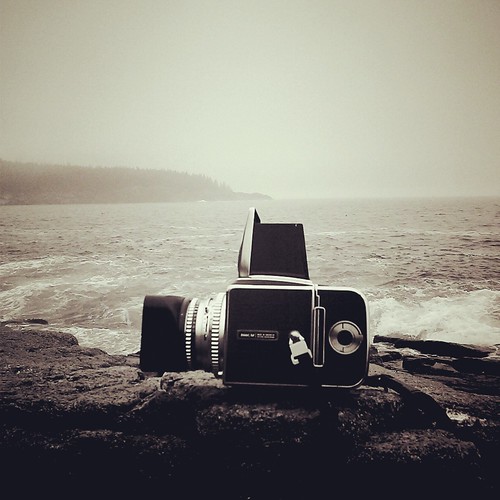
Luckily, the second hand market will keep these cameras active, and since these cameras have been in production for decades, it means that there are plenty of cameras out there in the world, and more than likely they will still be used well after I am dead and gone.
One of the things I've been thinking about lately is saving up for a medium format digital back for my Hasselblad. I've been researching backs for a good long while now, and the first hurdle you have to jump past is the expensive price. Most of the professional commercial shooters I know will simply rent a medium format digital camera and sink those costs into the job fee, but there are a few shooters I've had the chance to assist who purchase their cameras outright. And their choice of cameras and backs run the gamut from old 500 C/M Hasselblads with a digital back that has to be tethered to a computer, to the more recent "H" series where the images can be tethered or saved to a CF card inside the back.
Shooting with high resolution digital backs give the images a completely different look that what 35mm digital can produce. It isn't a good thing or a bad thing, it's just a specific look that the backs produce. Just like shooting with 35, 120, or 4x5 film all have their own unique look and characteristics.

But one thing I've never been able to understand is why someone didn't produce an entry-level medium format digital back. What this would have done was give a reason for all those shooting with something like a Hasselblad or a Mamiya the reason to invest in a back that would be backwards compatible with their existing film cameras. Perhaps in turn, it would cause people to seek out older film bodies so that they could then pick up a medium format back. Because of the size of the sensors in medium format digital backs, you don't need a gigantic 40 or 50 megapixel monstrosity that will cost you the equivalent of a high end luxury automobile, but something smaller that would help bring back photographers that used to shoot medium and large format film but felt they had no way to return to their medium format shooting styles and had to stay with 35mm DSLR cameras.
I kinda hope at some point someone will emerge on the scene with an affordable medium format digital back. Let the high-end commercial shooters have their 50 megapixel monsters, but give those with lighter wallets something in the 12-18 megapixel range that doesn't require us to be tethered to a computer to shoot. Again, you might laugh at the "12-18 megapixel" thing, but honestly, have you ever seen a medium format sensor compared to a 35mm DSLR sensor? The larger the sensor, the higher the quality. Those little photo sites can get bigger since the sensor is larger.
Hasselblad does have the (now discontinued) CFV and CFVII line of medium format digital backs. These backs have the same styling as the V series, thus giving you a back that looks like it was built with the camera at the same time - a beautiful creation of timeless quality and current technology. The CFVII in particular, is a 16 megapixel back. This is the back that I'm currently researching, and, someday, would love to have attached to the back of my Hasselblad.
But I understand why digital backs are priced the way they are - they are serious pieces of electrical equipment all squished into a square back that snaps on the back of your camera. I'm guessing that most digital backs sell in a year what a Canon or Nikon DSLR do in a week. But there has to be an economical way to take the basics of a digital back and put it in a form that can be obtainable for a certain tier of photographer.
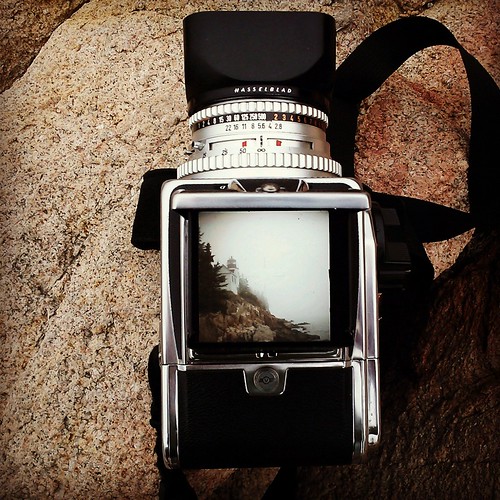
And in the end, a digital back is just a tool, just like any other photographic piece of equipment. I've seen people spend tens of thousands of dollars on a 50 megapixel digital back and camera just so they could take pictures of their grandson's birthday or the birds outside their window. And don't get me started on the number of bad photographs that are made with crazy high resolution digital backs and cameras. Don't believe me? Just do a search on Flickr sometime and you'll be amazed.
Before I switched over to digital I shot medium format and large format film. Prior to my Hasselblad purchase, I used to rock a Mamiya RB67 and I still have a 4x5 Toyo field camera here at the studio. I loved shooting and developing large negatives. The detail was so crisp. When you get to something like a 4x5 negative, you don't even have to put that in an enlarger - you can just make a contact print and the detail will be incredible. Or take a 4x5 and toss it in an enlarger and you can create amazing, crisp, detailed prints. Even the 6x6cm negatives from the Hasselblad have a lovely detail that you can't pull out of a 35mm film. A good high resolution digital 35mm sensor can put any 35mm film to shame, but I'm still on the fence about 35mm sensors being able to produce the same quality as a medium format back. I think it's kinda hard to cram all that stuff into a small sensor when compared to a large medium format sensor.
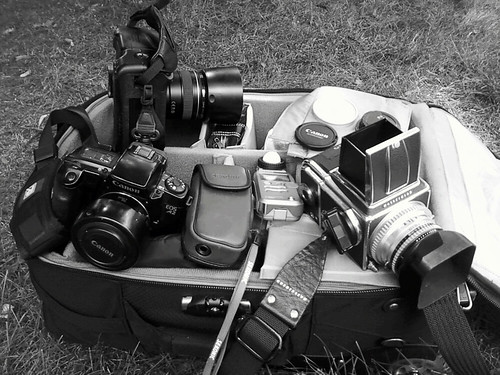
I'm totally digressing on this post, but I do hope, at some point down the road, someone will make an awesome entry-level medium format digital back. Heck, it doesn't even have to have an LCD screen on the back. Just give me a sensor in a back and I'll figure out the rest. I've got my light meter, I know the zone system, I know how to get a proper exposure. Let's shake the tree a bit and let all the unnecessary things fall off and what we would be left with is a gorgeous large sensor that would work with my Hasselblad. Or Mamiya. Or Pentax. Etc.
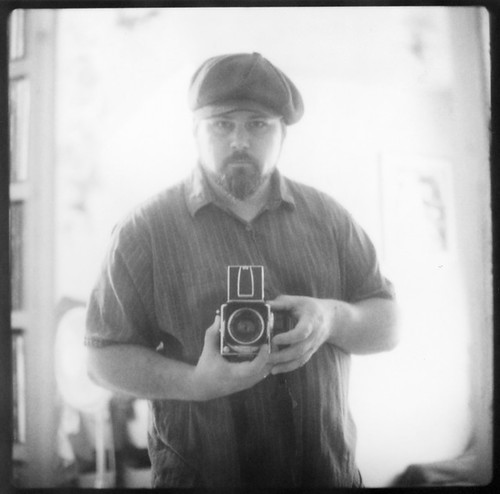
I also think Hasselblad the company really isn't the same Hasselblad that produced the V series decades ago anyway. Hasselblad has been having a really hard time marketing their new camera, the Lunar, which is basically a Sony camera with a horrible "fancy" facelift. Photography forums across the board have been slamming the camera calling it a blatant cash grab, and seeing that Hasselblad decides to stop supporting the classic V cameras and puts their efforts and support into the Lunar brand, well, I think it goes to show that Hasselblad is Hasselblad in name only. I know Victor Hasselblad is turning in his grave every time someone mentions the word "Lunar". Yikes.
So this is an open call to anyone with the technical ability to produce affordable medium format backs with a good sensor in it. Old 500C/M cameras are still being bought second hand, photographs are still being made on them, and this would be the perfect chance to reboot the used market of 500 series bodies and help those that have those bodies in the closet collecting dust to break them out and fire them up. If you are reading this and you make one, make sure you contact me. I want one.

As the sun sets on the "V" series of Hasselblad cameras, we know that the sun really isn't setting on this beautiful piece of artwork and utility. Thousands upon thousands of cameras are still out there, somewhere, still being used and still capture images on film. And that will continue - well after I'm dead and gone. My one big fear is that the dedicated hands of the craftspeople who fix these cameras will die out without further training younger hands and eyes how to work on them. If that happens, then the Hasselblad life will be shortened. I hope that never happens. These wonderful modular cameras that can adapt to anything need to exist to show that cameras simply aren't pieces of commerce, but they can be something more - they can be elegant pieces of working art, and in this day and age where we are overwhelmed with images on a daily basis, it is always good to step back and admire the craft of camera making.
